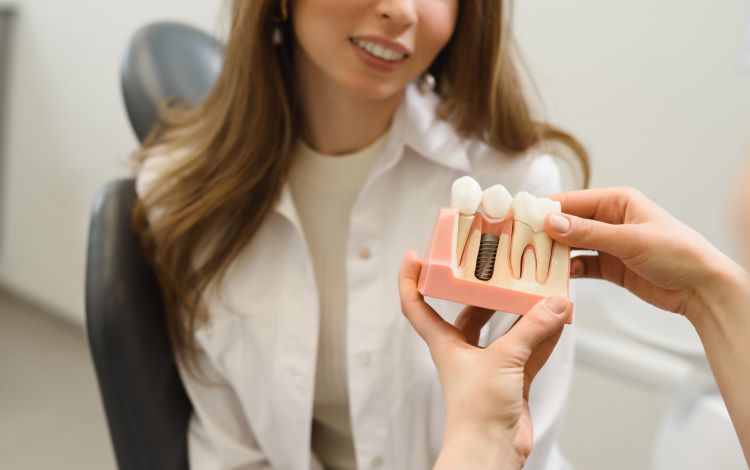Achieve Your Ideal Smile with Cosmetic Dentistry Grants
Cosmetic dentistry grants offer a ray of hope for individuals seeking to enhance their smiles but facing financial constraints. These grants provide support for various dental procedures, including dental implants, which can significantly improve oral health and self-confidence. Understanding how these grants work and how to access them can be the key to achieving the smile you've always dreamed of.

What are cosmetic dentistry grants and how do they work?
Cosmetic dentistry grants are financial assistance programs designed to help individuals afford dental procedures that improve the appearance and function of their teeth. These grants typically cover a portion of the treatment costs, making cosmetic dental work more accessible to those who might otherwise be unable to afford it. The grants are often provided by non-profit organizations, dental associations, or sometimes through government programs aimed at improving public health.
Who qualifies for cosmetic dentistry grants?
Qualification criteria for cosmetic dentistry grants vary depending on the organization offering them. However, common factors often considered include:
-
Financial need: Most grants are income-based, prioritizing individuals with limited financial resources.
-
Dental condition: The severity and impact of the dental issues on overall health and quality of life are often evaluated.
-
Age: Some grants may be specific to certain age groups, such as seniors or young adults.
-
Location: Certain grants might be available only in specific geographic areas.
-
Treatment type: Grants may be limited to particular procedures, with dental implants being a common focus.
It’s important to research and apply to multiple grant programs to increase your chances of receiving assistance.
What dental procedures are typically covered by these grants?
Cosmetic dentistry grants can support a wide range of dental procedures, depending on the specific program. Some commonly covered treatments include:
-
Dental implants
-
Veneers
-
Crowns and bridges
-
Teeth whitening
-
Orthodontic treatments (braces or aligners)
-
Gum contouring
-
Tooth-colored fillings
Dental implants, in particular, are often a focus of many grant programs due to their significant impact on oral health and quality of life for those missing teeth.
How do dental implant grants specifically help patients?
Dental implant grants provide focused support for individuals needing this life-changing procedure. Implants offer a permanent solution for missing teeth, improving both functionality and aesthetics. These grants can cover a significant portion of the implant cost, which is often the most expensive part of restorative dental work. By making implants more affordable, these grants help patients avoid the long-term health issues associated with missing teeth, such as bone loss, shifting teeth, and difficulties with eating and speaking.
What steps should I take to apply for a cosmetic dentistry grant?
To apply for a cosmetic dentistry grant, follow these steps:
-
Research available grants: Look for organizations offering dental grants in your area or nationwide.
-
Check eligibility: Carefully review the qualification criteria for each grant program.
-
Gather documentation: Prepare financial records, dental history, and any required personal information.
-
Complete the application: Fill out the grant application forms accurately and thoroughly.
-
Obtain a dental evaluation: Many programs require a professional assessment of your dental needs.
-
Submit your application: Send in all required documents before the deadline.
-
Follow up: Stay in contact with the grant organization for any additional information or updates.
Remember that the application process can be competitive, so apply to multiple programs if possible.
What are the typical costs associated with dental implants?
Dental implant costs can vary significantly based on factors such as location, the dentist’s expertise, and the complexity of the procedure. Here’s a general overview of potential costs:
| Procedure Component | Estimated Cost Range |
|---|---|
| Single Implant | $1,500 - $6,000 |
| Abutment and Crown | $500 - $3,000 |
| Additional Procedures (e.g., bone grafts) | $300 - $3,000 |
| Full Mouth Implants | $20,000 - $50,000 |
Prices, rates, or cost estimates mentioned in this article are based on the latest available information but may change over time. Independent research is advised before making financial decisions.
Cosmetic dentistry grants can significantly reduce these out-of-pocket expenses, making dental implants a more attainable option for many patients. However, it’s important to note that most grants do not cover the entire cost of treatment, and patients may still need to contribute a portion of the expenses.
In conclusion, cosmetic dentistry grants, particularly those focused on dental implants, offer a valuable opportunity for individuals to improve their oral health and confidence. By understanding the grant process, qualifying criteria, and application steps, you can take a significant step toward achieving your ideal smile. While the journey may require patience and persistence, the potential benefits to your health and well-being make it a worthwhile pursuit.




